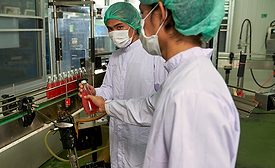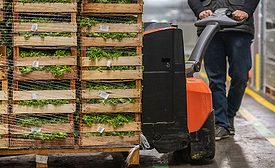Articles by Bob Ferguson
Food processors weigh in on the proposed reorganization of FDA's Human Foods program and the most important changes the agency should make with this transformation
Read More
How the Food Traceability Rule will Impact Food Processors—Part 2
Food processors are certainly aware of FDA's Final Food Traceability Rule, but many are not sure how they will be affected by it
April 10, 2023
How the Food Traceability Rule will Impact Food Processors—Part 1
What are food processors doing to prepare for compliance with the FDA Food Traceability Rule in 2026, and how do they see it affecting their businesses?
February 6, 2023
The Future of Food Safety Microbiology Markets
The markets surrounding microbiology testing have been changing rapidly in recent years—a change that will continue over the long term
December 9, 2022
Evolving Relationships Between Food Processors and Regulatory Agencies
Processors speak out about how they are coping with regulatory demands now that FDA has resumed in-person inspections
October 11, 2022
Focusing Ahead—Processors' Priorities for the Near Term
Food processors are now focusing on projects and priorities put on hold during the pandemic, including maintaining or adding to food safety certifications
August 15, 2022
The Return to Normal—Ready to Travel Again?
Ongoing travel restrictions at food companies vary widely for 2022, with "essential travel" taking on different meanings at different organizations
June 10, 2022
Supply Chain Recovery—Processors Speak Out
Changes in supply and operations planning are needed to avoid future disruptions—but how soon can they be implemented?
April 19, 2022
How WGS Continues to Change Food Safety
Whole genome sequencing is helping identify the root cause of more foodborne illness outbreaks
February 16, 2022
Supply Chain Woes – What is At Stake, and What Will Change?
Unanticipated disruptions, complicated by lean manufacturing principles, can quickly create a critical supply situation.
December 21, 2021
Never miss the latest news and trends driving the food safety industry
eNewsletter | Website | eMagazine
JOIN TODAY!Copyright ©2025. All Rights Reserved BNP Media.
Design, CMS, Hosting & Web Development :: ePublishing










